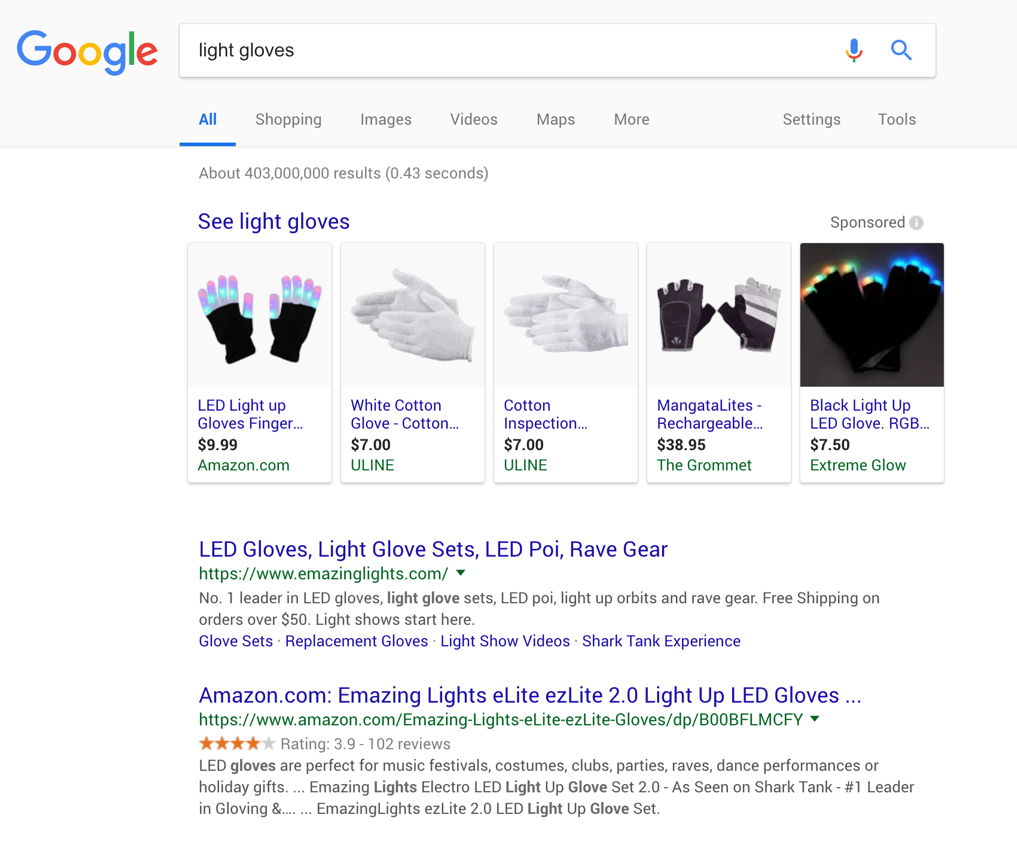
If you met someone from British Columbia, Canada for the first time and they told you that they live in West Van, you might question whether they live in a vehicle or something. However, the term “Van” is used by many locals in Vancouver to describe different parts of the city. And fyi...West Van is quite posh.
Having an online business allows you to sell to customers from anywhere, at any time. But if you aren’t speaking to local markets in a language that they understand and appreciate, you’re missing opportunities to connect with that market in a meaningful way.
Likewise, there are many local advertising and tax laws, plus important government regulations to be aware of before entering into and selling to new markets.This may be something that you wish you had the time to research. Or, perhaps it seems overwhelming to know where to start. To make your life easier, I’ve collected some useful tips and resources to help you to better understand and attract local markets. So, let’s get started.
1. Discover The Local Markets That Are Right For Your Business
Just because your business is online, doesn’t mean that you have to be all things to everyone.So, if you’ve already been running your online store for a while, a good place to learn more about the customers who are already seeking out your products, and where they are coming from is your web analytics data.
This will help you to zero-in on your primary local target markets.

Image via webanalyticsworld.net
If you are using Google Analytics, check out the Locations Report which can be found under Demographics within the Audience tab. In Canada and the U.S. you can look at specific regions (like States and Provinces) – and even major cities tied to your customers’ IP address.
Your goal with this data is to find out which cities or regions are visiting your website most frequently. Is there a pattern that helps you identify which cities spend more with your website? And is this because you are actively targeting these markets, or are they coming to you because of what you sell?
Check out this helpful blog post which explains how to navigate your location data reports.
Once you have this information, you’ll be able to determine which regions or cities you need to tailor your message to through online promotions and your website.
2. Understand The Cultural Nuances In Each Market

Image via Pixabay
Most businesses already know that if you are selling your products in both Canada and the U.S., it is important to know the quirky cultural differences between the two countries.
However, as I described earlier, people from different regions in the same country might use unique words and expressions to describe a product (or a place in the case of Vancouver locals).They also might have different habits, beliefs, or use different languages than people in another city in the same state or province.For example, in some parts of the U.S., if you order a “Coke,” your server might think that you want to order a soda. And their next question would be “what kind?” Here’s a regional breakdown of who says what and where in regards to asking for a “soda” versus a “pop” versus a “Coke."
So, it’s really important to use the right cultural language in order to speak directly to different markets within the same country. Otherwise, your message might get lost in translation.
In fact, according to this Stanford University Business School story, “cultural biases influence purchasing behavior when information is processed in a cursory and spontaneous manner.”
In other words, when someone is in a hurry to buy something, or they see an ad on a billboard or banner ad for just a brief moment, their interpretation of your marketing message is reliant on some of their cultural beliefs.
In the case of the Stanford advertising study, many Asian American students favored one promotional message which talked about the “preventative and security” features of Welch’s grape juice, whereas most Anglo American students identified more with a different promotional message which spoke to the key personal benefits that could be gained from the beverage, such as “having more energy.”
And while you need to do your homework and research important nuances for each target market, there is something to be said for physically visiting key markets, and immersing yourself in the culture, to get to know your customers personally.
Here are a few ways you might do this:
-
Hire people as “boots on the ground” in key markets where you really want to dive deep into the local culture, climate (does it rain a lot or snow a lot and how does that impact what people do for fun or to stay connected as a community?) and history. These people don’t necessarily have to be running a physical store in that location - they could be remote or “virtual” employees who simply add an extra dynamic to your local marketing team.
For instance, let’s say that you wanted to target the province of Quebec in Canada. You’d need to develop a separate local marketing strategy for the City of Montreal versus Quebec City and Rural Quebec, for example.
So, you would need people in each location who can tell you more about the rich history of each of these regions, how the political climates differ (e.g. some parts of Quebec support the Bloq Quebecois, whereas other parts are more supportive of the NPD or Liberal party).
In Montreal, many people are bilingual (speaking both English and French). Still, many locals will appreciate it if you try to communicate in French with them first. But in some parts of Quebec, people would want to access your site exclusively in French. So, that would play a role in how your craft your marketing messages.
And Montreal is a melting pot of cultures, religions and personal beliefs, whereas other parts of Quebec are devoutly Catholic. So, although this example may sound a little crude, you could target Montreal if you sell XXX adult entertainment or toys online. But you probably wouldn’t want to target your website to the heavily Catholic populations in rural Quebec, as it may not be well tolerated.
-
Set-up a pop-up shop in each of your target cities and invite some of your best customers to meet your team face-to-face, provide feedback and learn more about your products and brand experience.
In fact, Shopify recently conducted a retail tour of major cities across Canada (via local pop-up shops) to get up-close and personal with existing customers. The goal of the tour was to “teach” versus “sell” to customers through ecommerce best practices workshops that were hosted in a casual setting. Here’s a full description of how this concept was created and successfully executed.
3. Ensure You Are Following Local Laws And Restrictions
Following the laws for each specific market in which you are going to promote and sell your products can get tricky if you are an online business. So, it’s helpful to familiarize yourself with consumer protection and truth in advertising laws which can differ across states and provinces in North America.One example in Canada is the contest laws that exist in Quebec versus the rest of the country. As this article explains, it is important to “pay special attention to Quebec” because you have to register your contest with a provincial regulator and you may have to “pay a 3% tax on the total prize value.”Both the contest registration process and the tax payment can be a bit of a hassle. So, to the detriment of Quebec residents, a lot of companies choose to exclude the province from national contests – especially when under a time crunch to get a promotion up and running quickly.
In addition, there are different language, pricing and labeling laws across Canada and in the U.S. This Huffington Post article breaks down a lot of the key cross-border and cross-cultural challenges and differences to note.
4. Tap Into Local Government Resources For Market Data
Local government databases are an excellent source for market data about cultural nuances and consumer demographics. And since a lot of this information is free online, you don’t have to have a large market research budget to uncover great insights.If you live in the U.S., here’s a link to a list of available databases that you can tap into by state. And if you are looking to target Canadian consumers, here’s a website that includes links to various databases like Statistics Canada which provides census data that can be broken down by region.You can also access information from individual cities like the City of Toronto’s open data catalogue. By open data, I mean information that can be freely used and manipulated by anyone. You’ll have to do a little bit of digging (and by digging, I mean web searching) to find specific open data sources by city. But tapping into this information will help you grow your business.
5. Evaluate Local Payment And Shipping Options

Image via Pixabay
Another challenge for doing business across borders and with different local regions are variances in taxes and shipping rates.
For example in Canada, each province charges a different sales tax rate. So, it’s important understand what each of those rates are and when to apply them to the products to that you sell (you might be exempt for certain products).
Luckily, if you use Shopify as your ecommerce platform, you can easily set-up the taxes for different countries and regions using the Tax Settings feature. Shopify keeps that information up to date (so you don’t have to stay on top of all of the changes) and automatically applies the rate to whatever countries or regions that you add into tool. Here’s a link to the manual to help you get started.
In addition, you should consider offering free shipping to customers wherever you ship your products – even if it means cutting into your margins a little bit in certain regions. That’s because studies have shown that the cost of shipping is a big deal breaker when it comes to shopping cart abandonment rates.
For more stats and details on how to resolve this issue, check out this blog post about how to choose a shipping strategy for your online store.
Keep in mind that if you cannot offer free shipping to a specific region or country, then it’s important not to show those customers the free shipping option that is available to everyone else on the site. It’s definitely a turn-off to know that other customers are getting a better deal. See the next section for more details on local marketing strategies.
6. Tailor Your Marketing Strategies For Key Regions And Cities
Once you have all of the data and resources you need to identify your top target cities or regions, how you should speak directly to each market, and what you can and cannot do to sell to them, it’s time to build a local marketing and website targeting strategy.While I could spend an entire blog post writing specifically about local marketing strategies, here are a few ideas to get you started:

Landing page for Florida residents

Landing page for Colorado residents
-
Create locally targeted landing pages for key markets. The screenshots above show how an online store displays two different promotions (one for Colorado residents and one for Florida residents) based on their visitors’ geographic location.
To explain this concept further, here’s a link to a guide from Moz.com on the importance of geo-specific landing pages and what to consider when building your own. To do this with Shopify, you can either create a separate page for each market, or use Landed – a third-party partner app.
Likewise, you can work with Shopify partners like Visual Website Optimizer or Optimizely to help you geo-target specific content areas on your homepage. While this will require a bit of time to set-up, it is worth doing in order to provide a tailored experience for your local customers.
-
Segment your customer email lists by location and customize your content to increase conversions. Again, this could mean letting specific locations know that they can get free shipping (or other promotional discounts) while excluding this information from other local market lists.
This informative post from the Shopify blog explains how to segment your email list and the best email marketing tools to use.
-
Geo-target your digital ad campaigns. Many ad platforms let you geo-target (meaning to deliver an ad online to a specific geographic location) right down to the postal code. This can be especially useful if you are trying to drive customers to a local retail store via mobile advertising.
Just like the email strategy described above, you can create targeted messages and creative that will resonate with each local market. And if you are focusing on paid search or SEO, make sure you target regionalized keywords in addition to developing location-specific creative.
Check out this overview from SiteSpect on how to leverage geo-targeting to increase engagement and conversions.
-
Target location-specific events like the weather or local holidays. You’ll have to do research on what the key events are in each of your biggest target markets.
But the information you uncover can help you to tailor specific promotions and offers associated with those events – like a sale on rain gear if it has been raining non-stop for a number of days in one location. Or if people in Quebec, Canada are planning to celebrate St.-Jean-Baptiste day.
- Continue to track everything in Analytics to see if your local marketing strategy is working or if it needs refining. Here’s a simple guide to making the most out of your web analytics data.
Then, once you have developed a set of best practices (and perhaps learned from some mistakes), you can put together a plan to roll out your strategies to other markets that you have identified and properly researched – one step at a time!









